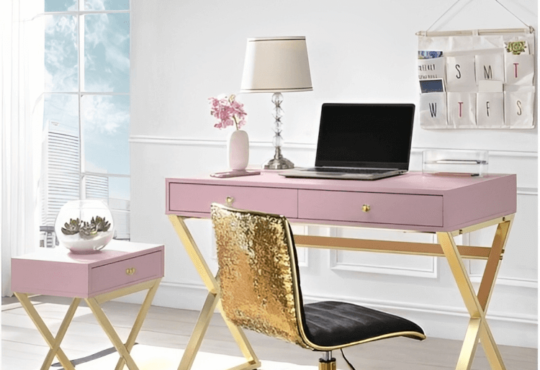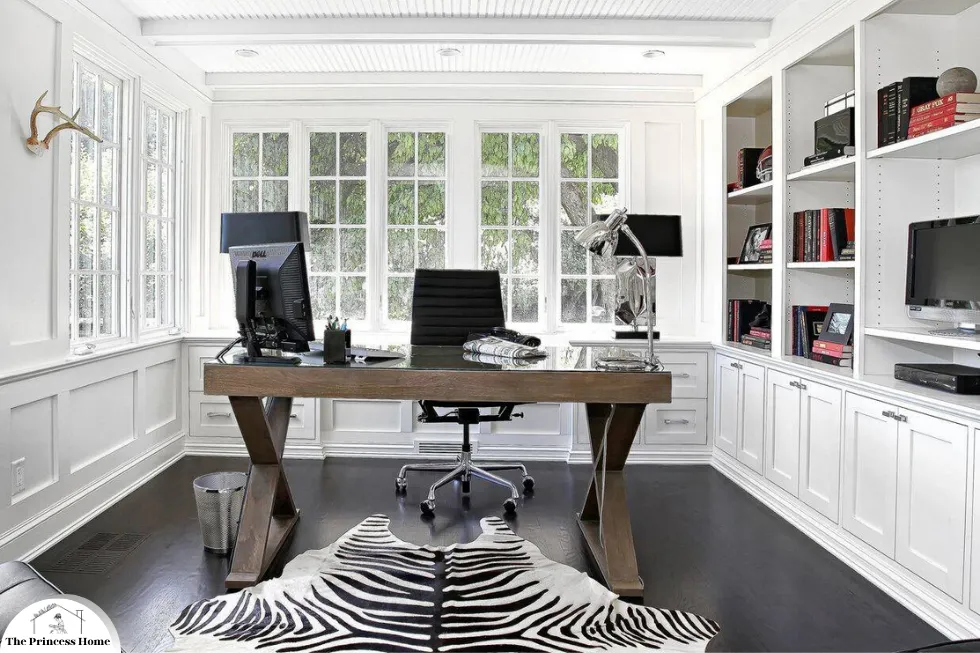
In recent years, the concept of working from home has gained immense popularity, and with it, the importance of creating a conducive and comfortable home office environment has become paramount. While factors like furniture, lighting, and decor play significant roles in shaping the ambiance of a home office, one often overlooked aspect is the choice of flooring, particularly the carpet. A well-selected carpet can enhance the aesthetics, comfort, and functionality of your workspace.
In this comprehensive guide, we’ll explore the considerations and factors to keep in mind when choosing the perfect home office carpet.
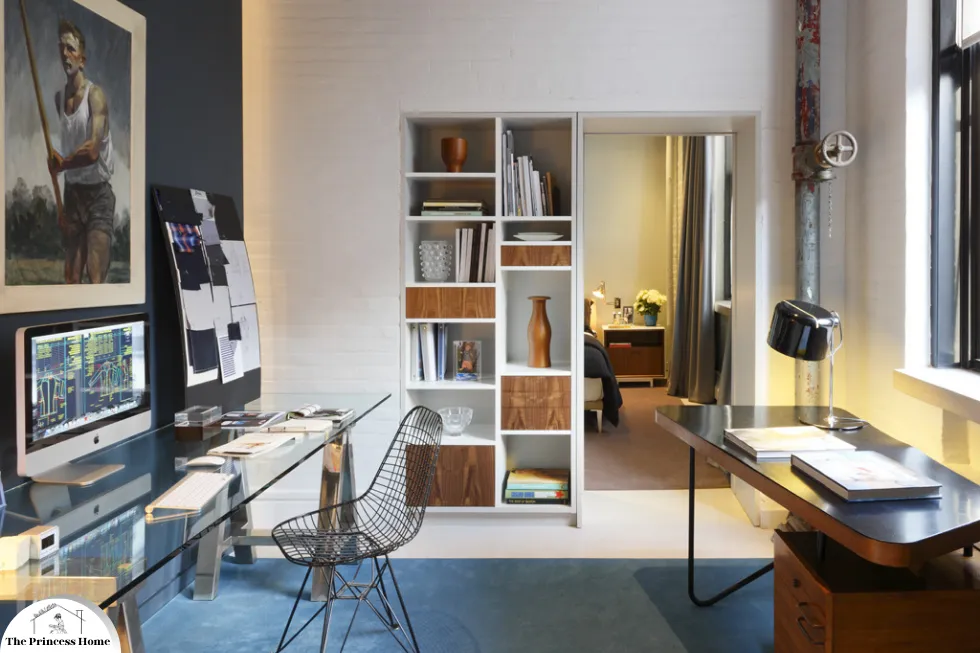
1.Comfort and Ergonomics:
One of the primary considerations when selecting a home office carpet is comfort. Since you’ll be spending extended hours seated or standing in your workspace, it’s essential to choose a carpet that provides adequate cushioning and support. Look for carpets with plush textures and sufficient padding to reduce fatigue and strain on your feet and legs. Additionally, consider carpets with built-in ergonomic features designed to promote better posture and reduce the risk of discomfort or injury. comfort and ergonomics are paramount when selecting a home office carpet.
Here’s a breakdown of why they’re crucial considerations:
1.Extended Hours of Use:
In a home office setting, it’s not uncommon to spend long hours seated or standing at your desk. The comfort of your flooring becomes crucial to prevent fatigue and discomfort during these extended periods.
2.Adequate Cushioning:
Carpets with plush textures and sufficient padding offer excellent cushioning, reducing the impact on your feet and legs. This cushioning absorbs shock and provides a comfortable surface to stand or walk on for extended periods.
3.Reducing Fatigue:
Working long hours can lead to tiredness and strain on your body, particularly your feet and lower back. A carpet with adequate cushioning helps alleviate this fatigue, allowing you to remain productive and focused throughout the day.
4.Promoting Better Posture:
Ergonomic features in carpets, such as built-in support or contours, can help promote better posture while working. By providing support to key pressure points, these features reduce the risk of discomfort or injury, especially in areas prone to strain, such as the lower back and joints.
5.Minimizing Injury Risk:
Choosing a carpet with ergonomic features not only enhances comfort but also reduces the risk of musculoskeletal injuries associated with prolonged sitting or standing. By supporting your body’s natural alignment, these features help prevent strain and stress on muscles and joints.
In summary, selecting a home office rug with comfort and ergonomic considerations in mind is essential for creating a conducive and healthy workspace. Look for carpets with plush textures, sufficient padding, and built-in ergonomic features to ensure optimal comfort, support, and safety during long hours of work. By prioritizing these factors, you can create a workspace that promotes productivity, focus, and overall well-being.
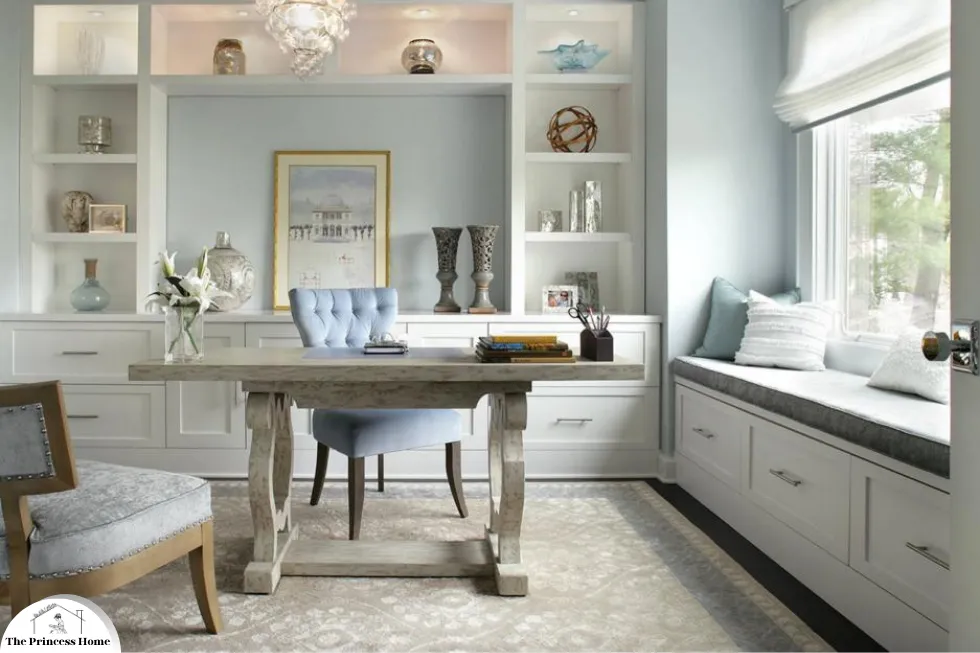
2.Durability and Maintenance:
Home offices often experience high foot traffic, especially in areas around desks and workstations. Therefore, it’s crucial to choose a carpet that can withstand regular use and is easy to maintain. Opt for carpets made from durable materials such as nylon or polyester, which are resistant to stains, fading, and wear.
Additionally, consider factors like pile height and density, as carpets with higher pile and density tend to be more resilient and long-lasting. Choose carpets with stain-resistant treatments or easy-to-clean properties to simplify maintenance and upkeep. Durability and maintenance are indeed critical factors to consider when selecting a home office rug.
Here’s why they matter and how to choose wisely:
1.High Foot Traffic:
Home offices, particularly around desks and workstations, often experience heavy foot traffic. This constant movement can lead to wear and tear on carpets over time. Choosing a carpet with high durability ensures it can withstand this regular use without showing signs of deterioration.
2.Resistant Materials:
Carpets made from durable materials like nylon or polyester are ideal for home office settings. These fibers are known for their resilience and ability to withstand high traffic areas. Additionally, they are resistant to stains, fading, and wear, ensuring your carpet maintains its appearance and functionality over the long term.
3.Pile Height and Density:
The pile height and density of a carpet also play a crucial role in its durability. Carpets with higher pile height and density are more resilient to compression and wear, making them ideal for high-traffic areas. Additionally, dense carpets provide better support and cushioning underfoot, enhancing comfort and longevity.
4.Stain-Resistant Treatments:
Stains are a common concern in home offices, especially in areas where food and beverages are consumed. Choosing a carpet with stain-resistant treatments or coatings can help prevent stains from setting in and make cleaning spills easier. Look for carpets with built-in stain protection or consider applying a stain-resistant treatment after installation for added peace of mind.
5.Easy Maintenance:
Home office rug should be easy to clean and maintain to preserve their appearance and functionality. Choose carpets that are compatible with regular vacuuming and spot cleaning to remove dirt, dust, and spills promptly. Additionally, consider professional steam cleaning or dry cleaning every 12 to 18 months to deep clean and refresh your carpet, prolonging its lifespan and ensuring optimal performance.
By prioritizing durability and maintenance when selecting a home office rug , you can invest in a flooring solution that withstands the rigors of daily use and maintains its appearance and functionality over time. Opt for carpets made from durable materials, with high pile height and density, and stain-resistant treatments to ensure long-lasting performance and easy upkeep in your workspace.
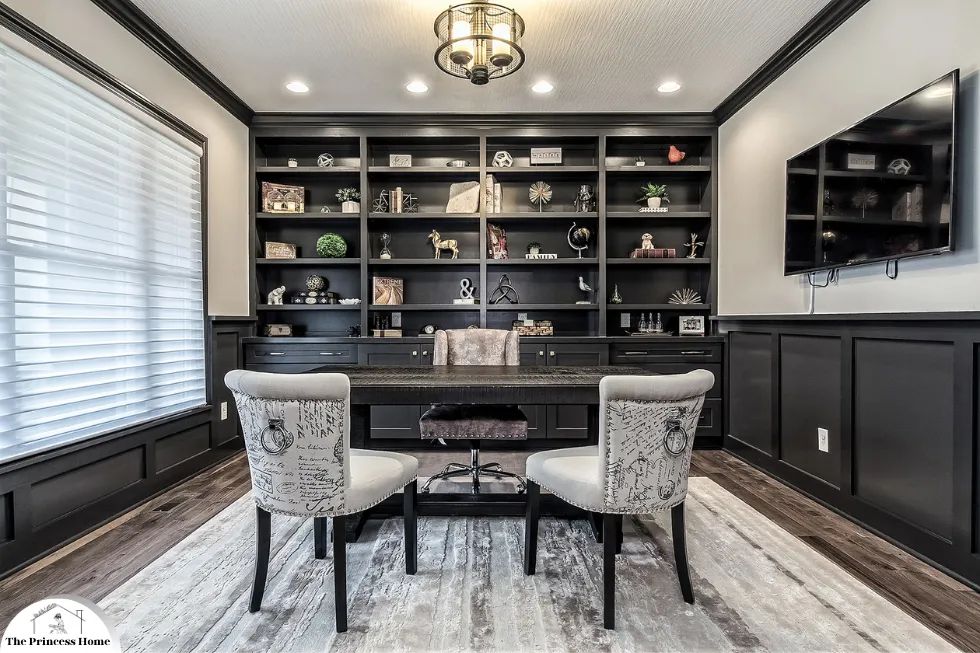
3.Noise Reduction:
A quiet and peaceful working environment is essential for productivity and concentration. Carpets can play a significant role in reducing noise levels by absorbing sound and minimizing echoes. When selecting a carpet for your home office, consider its acoustic properties and opt for thicker, denser materials that can effectively dampen sound. Additionally, consider installing underlayments or soundproofing materials beneath the carpet to further enhance noise reduction capabilities. Noise reduction is indeed crucial for maintaining a productive and focused atmosphere in a home office.
Here’s why it matters and how carpets can help:
1.Productivity &Concentration:
Excessive noise can be distracting and disrupt concentration, making it difficult to focus on tasks and maintain productivity. A quiet working environment is essential for fostering creativity, problem-solving, and efficient work processes.
2.Sound Absorption:
Carpets act as effective sound absorbers, reducing the transmission of noise within a room. The soft fibers of the carpet trap sound waves, preventing them from bouncing off hard surfaces and creating echoes. This absorption helps create a quieter and more acoustically balanced environment, conducive to concentration and productivity.
3.Thicker, Denser Materials:
When selecting a carpet for your home office, consider its acoustic properties. rug with thicker pile and higher density provide better sound insulation, effectively dampening noise and reducing its impact on the environment. Opt for carpets made from dense materials such as wool or nylon, which offer superior sound absorption capabilities.
4.Soundproofing Materials:
Enhance the noise reduction capabilities of your home office rugby installing underlayments or soundproofing materials beneath the carpet. These additional layers help absorb sound vibrations and prevent noise from traveling through the floor to adjacent rooms. Consider options such as foam or rubber underlayments specifically designed for sound insulation purposes.
5.Customized Solutions:
Depending on your specific noise reduction needs, you can customize your carpet installation to maximize acoustic performance. For example, consider installing wall-to-wall carpeting or covering a larger area of the floor to minimize sound transmission. Additionally, strategically place furniture and decor items to further dampen noise and create a quieter work environment.
By selecting a rug with excellent sound absorption properties and implementing additional soundproofing measures, you can create a home office environment that promotes concentration, productivity, and overall well-being. Prioritize thicker, denser materials and consider investing in underlayments or soundproofing materials to effectively reduce noise levels and create a quiet and peaceful workspace.

4.Style and Aesthetics:
While functionality is paramount, aesthetics should not be overlooked when choosing a home office carpet. The carpet you select should complement the overall decor and design scheme of your workspace. Consider factors such as color, pattern, and texture to create a cohesive and visually appealing environment. Neutral tones like beige, gray, or taupe are versatile options that can blend seamlessly with various decor styles, while bold patterns or textures can add character and personality to your space. style and aesthetics are essential aspects to consider when choosing a home office rug .
If you prefer a modern, minimalist look for your home office, consider opting for a rug that features clean lines, geometric patterns, or solid colors. Neutral tones like white, gray, or black can enhance the sleek, streamlined aesthetic of a modern space. You might choose a rug with a low pile or flat weave for a minimalist feel, as it will provide texture without overwhelming the room.
On the other hand, if you lean towards a more traditional, cozy feel, look for rugs with classic patterns like floral, oriental, or Persian designs. Warm, rich colors such as burgundy, navy, or deep brown can create a welcoming atmosphere in your home office. Consider a rug with a higher pile or plush texture to add comfort and coziness to the room.
When selecting a rug to complement your existing decor, take into account the colors and materials of your office furniture, walls, and accessories. Choose a rug that harmonizes with these elements to create a cohesive and visually appealing space. Whether you prefer modern minimalism or traditional coziness, the right rug can enhance the overall design aesthetic of your home office and make it a more enjoyable place to work.
Here’s why they matter and how to make the best selection:
1.Creating a Cohesive Environment:
The aesthetics of your home office play a significant role in shaping the overall ambiance and mood of the space. Your rug choice should complement the existing decor and design scheme, creating a cohesive and visually pleasing environment that inspires productivity and creativity.
2.Color Palette:
Consider the color palette of your home office when selecting a carpet. Neutral tones like beige, gray, or taupe are timeless options that provide a versatile backdrop for various decor styles. These hues create a sense of warmth and sophistication while allowing other elements in the room to stand out.
3.Pattern and Texture:
Incorporating patterns or textures into your carpet can add visual interest and personality to your home office. Consider options such as geometric patterns, floral motifs, or subtle textures that complement your decor theme without overwhelming the space. Bold patterns or textures can serve as focal points and inject character into your workspace.
4.Versatility and Flexibility:
Choose a carpet that offers versatility and flexibility to accommodate changes in your home office rug over time. Opt for classic designs and neutral colors that can adapt to evolving design trends and personal preferences. This ensures that your carpet remains relevant and stylish for years to come, minimizing the need for frequent updates or replacements.
5.Personal Expression:
Your home office is a reflection of your personal style and preferences. Use your carpet choice as an opportunity to express your unique taste and personality. Whether you prefer a minimalist aesthetic, a cozy and inviting atmosphere, or a bold and vibrant color scheme, select a carpet that resonates with your individual style and enhances the overall look and feel of your workspace.
By prioritizing style and aesthetics when choosing a home office rug , you can create a visually appealing environment that reflects your personality and inspires creativity. Consider factors such as color, pattern, and texture to create a cohesive and inviting space that motivates you to work productively and comfortably. Whether you prefer a subtle and understated look or a bold and expressive design, there are endless options available to suit your unique preferences and elevate your home office decor.
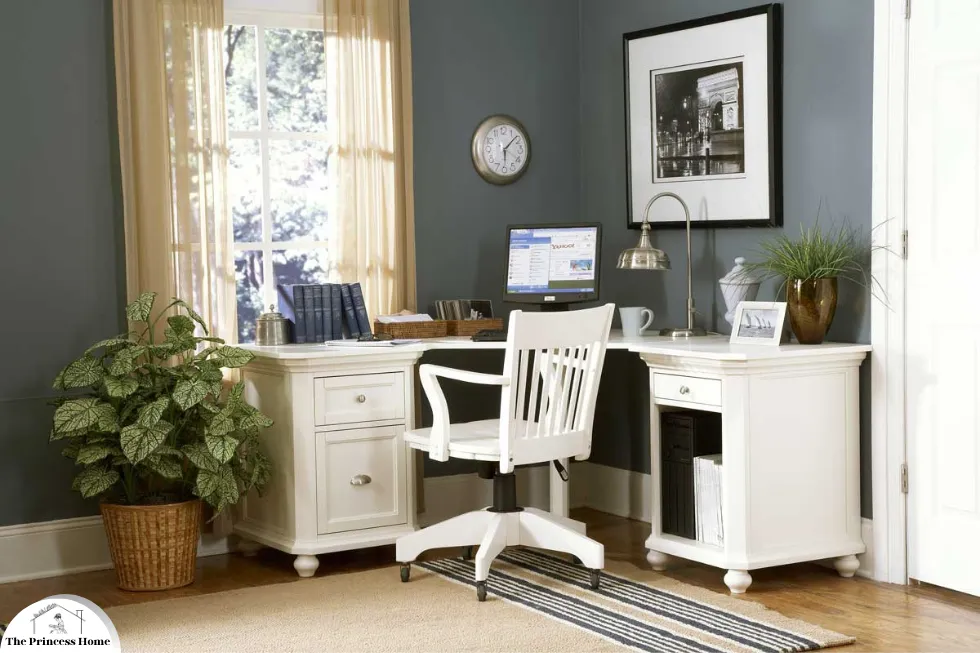
5.Allergen Considerations:
For individuals with allergies or respiratory sensitivities, choosing a carpet with hypoallergenic properties is essential. Carpets made from natural materials like wool or those treated with anti-allergen coatings can help minimize the presence of dust mites, pet dander, and other allergens. Regular vacuuming and professional cleaning can also help maintain a clean and allergen-free environment. Considering allergen considerations when choosing a home office rug is crucial, especially for individuals with allergies or respiratory sensitivities.
Here’s why it matters and how to make the best choice:
1.Allergen Reduction:
Carpets can trap allergens such as dust mites, pet dander, pollen, and mold spores, which can exacerbate allergy symptoms and respiratory issues. Choosing a carpet with hypoallergenic properties helps minimize the presence of these allergens, creating a healthier indoor environment for individuals with allergies or sensitivities.
2.Natural Materials:
Carpets made from natural materials like wool are inherently hypoallergenic and resistant to allergen buildup. Wool fibers have a unique structure that repels dust mites and prevents the growth of mold and mildew, making them an ideal choice for allergy sufferers. Additionally, wool carpets are naturally resistant to static electricity and flame retardant, further enhancing their safety and comfort.
3.Anti-Allergen Treatments:
Consider carpets treated with anti-allergen coatings or treatments designed to repel common allergens. These treatments create a protective barrier on the carpet fibers, preventing allergen buildup and making it easier to remove dust and debris during regular cleaning. Look for carpets certified by reputable organizations for their anti-allergen properties to ensure maximum effectiveness.
4.Regular Cleaning:
Proper maintenance and cleaning are essential for minimizing allergen buildup in your home office rug. Vacuum your carpet regularly using a vacuum cleaner equipped with a HEPA filter to capture fine particles and allergens effectively. Consider steam cleaning or professional carpet cleaning every 12 to 18 months to deep clean and refresh your carpet, removing embedded dirt, dust, and allergens.
5.Preventing Moisture and Mold:
Moisture can promote the growth of mold and mildew in rug , exacerbating allergy symptoms and respiratory issues. Take steps to prevent moisture buildup in your home office by maintaining proper ventilation, controlling humidity levels, and addressing spills or leaks promptly. Consider using a dehumidifier in areas prone to high humidity to reduce moisture in the air and prevent mold growth.
By choosing a hypoallergenic rug made from natural materials or treated with anti-allergen coatings, and implementing proper cleaning and maintenance practices, you can create a clean and allergen-free environment in your home office. Prioritize regular cleaning and ventilation to minimize allergen buildup and promote better indoor air quality, ensuring a healthy and comfortable workspace for individuals with allergies or respiratory sensitivities.
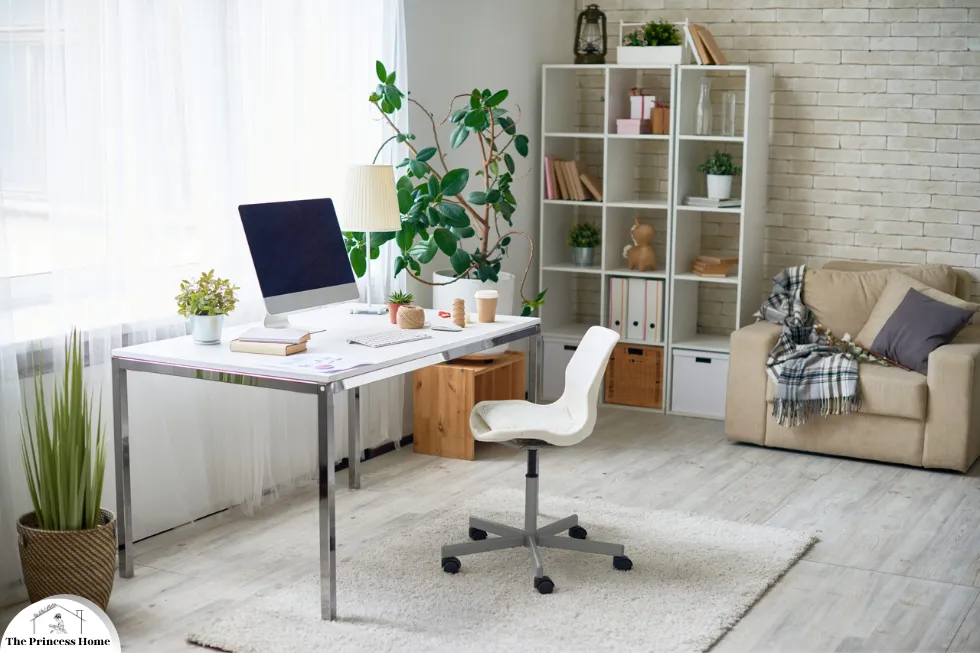
6.Budget and Cost:
As with any home improvement project, budget considerations play a significant role in selecting a home office carpet. Carpets are available in a wide range of price points, from budget-friendly options to luxurious designer styles. Determine your budget early in the decision-making process and explore various options that align with your financial constraints. Keep in mind that while higher-quality carpets may come with a higher upfront cost, they often offer better durability, comfort, and long-term value. Budget and cost considerations are integral parts of choosing a home office rug.
Here’s why they’re important and how to approach them:
1.Financial Planning:
Establishing a budget for your home office carpet project is the first step in the decision-making process. Take into account factors such as the size of the room, the quality of carpet desired, and any additional expenses such as installation or underlayment materials. Determine a realistic budget range that aligns with your financial constraints and allows for flexibility in selecting the right carpet for your needs.
2.Cost vs. Quality:
Carpets are available in a wide range of price points, from budget-friendly options to high-end designer styles. While it may be tempting to opt for the lowest-priced carpet to save money upfront, it’s essential to consider the long-term value and durability of the carpet. Higher-quality carpets often come with a higher upfront cost but offer better durability, comfort, and overall performance, leading to cost savings over time through reduced maintenance and replacement expenses.
3.Durability and Longevity:
Investing in a higher-quality carpet may initially cost more, but it can pay off in the long run by extending the lifespan of your flooring and reducing the need for frequent replacements. Consider factors such as material quality, construction, and warranty coverage when comparing carpet options. Look for carpets made from durable materials like nylon or polyester and those backed by comprehensive warranties to ensure long-term satisfaction and value.
4.Comfort and Performance:
Higher-quality carpets typically offer better comfort and performance compared to lower-priced alternatives. They often feature superior cushioning, stain resistance, and wear resistance properties, providing a more comfortable and functional workspace. Consider the level of comfort and performance you desire in your home office carpet and choose accordingly based on your budget and priorities.
5.Value-Added Features:
Some carpets come with additional features and benefits that contribute to their overall value and appeal. These may include built-in stain resistance treatments, antimicrobial properties, or eco-friendly certifications. While these features may increase the upfront cost of the carpet, they can provide added peace of mind and enhance the overall quality and performance of your flooring investment.
By carefully assessing your budget, prioritizing quality and durability, and considering long-term value and performance, you can select a home office carpet that meets your needs and enhances your workspace without breaking the bank. Remember to explore various options within your budget range and consult with flooring professionals for expert advice and recommendations tailored to your specific requirements and preferences.

7.Environmental Impact:
In an increasingly eco-conscious world, many homeowners are prioritizing sustainability and environmental responsibility when choosing home furnishings, including carpets. Look for carpets made from renewable or recycled materials and manufactured using eco-friendly processes. Certifications such as Green Label Plus or Cradle to Cradle indicate that a carpet meets stringent environmental standards and contributes to a healthier indoor environment. Considering the environmental impact when choosing a home office carpet is essential in today’s eco-conscious world.
Here’s why it matters and how to make environmentally responsible choices:
1.Sustainability:
Carpets made from renewable or recycled materials help reduce reliance on finite resources and minimize environmental footprint. Look for carpets made from natural fibers such as wool, jute, or sisal, which are renewable and biodegradable. Additionally, consider carpets manufactured from recycled materials such as recycled nylon or polyester, which divert waste from landfills and conserve resources.
2.Eco-Friendly Processes:
The manufacturing process of carpets can have significant environmental implications, including energy consumption, water usage, and chemical emissions. Choose carpets produced using eco-friendly manufacturing processes that minimize environmental impact and prioritize sustainability. Look for certifications such as Green Label Plus or Cradle to Cradle, which ensure that a carpet meets stringent environmental standards and contributes to a healthier indoor environment.
3.Low VOC Emissions:
Volatile organic compounds (VOCs) are chemicals emitted from carpet materials and adhesives that can contribute to indoor air pollution and negatively impact indoor air quality. Choose carpets with low VOC emissions to promote a healthier indoor environment and reduce exposure to harmful chemicals. Look for carpets certified as low-VOC or VOC-free by reputable organizations to ensure that they meet rigorous air quality standards.
4.Recycling and Disposal:
Consider the end-of-life impact of your home office carpet and choose options that are recyclable or biodegradable. Carpets made from recyclable materials can be reclaimed and repurposed at the end of their lifespan, reducing waste and conserving resources. Additionally, biodegradable carpets break down naturally over time, minimizing environmental impact and promoting sustainability. Explore recycling programs offered by carpet manufacturers or retailers to responsibly dispose of old carpets and minimize landfill waste.
By prioritizing sustainability and environmental responsibility when choosing a home office carpet, you can reduce your carbon footprint, promote resource conservation, and create a healthier indoor environment for yourself and your family. Look for carpets made from renewable or recycled materials, manufactured using eco-friendly processes, and certified by reputable organizations for their environmental performance. By making environmentally responsible choices, you can enjoy a beautiful and sustainable home office that aligns with your values and contributes to a greener future.
In conclusion, choosing the perfect home office carpet involves careful consideration of factors such as comfort, durability, style, and environmental impact. By prioritizing these considerations and selecting a carpet that aligns with your functional and aesthetic preferences, you can create a comfortable, productive, and visually appealing workspace that inspires creativity and enhances your overall well-being. Take your time to explore different options, seek expert advice when needed, and invest in a quality carpet that will elevate your home office experience for years to come.
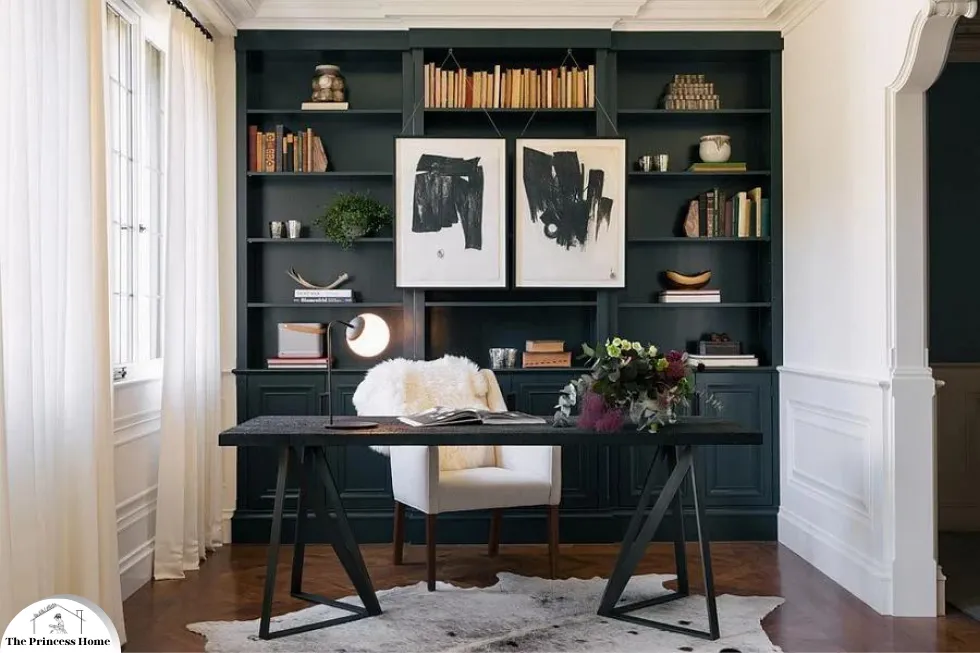
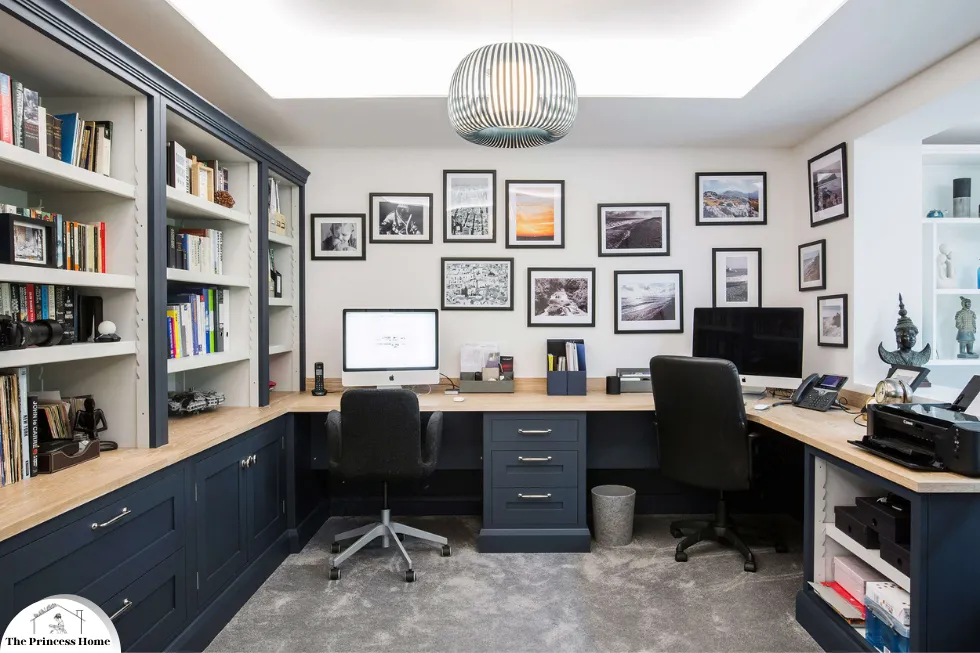

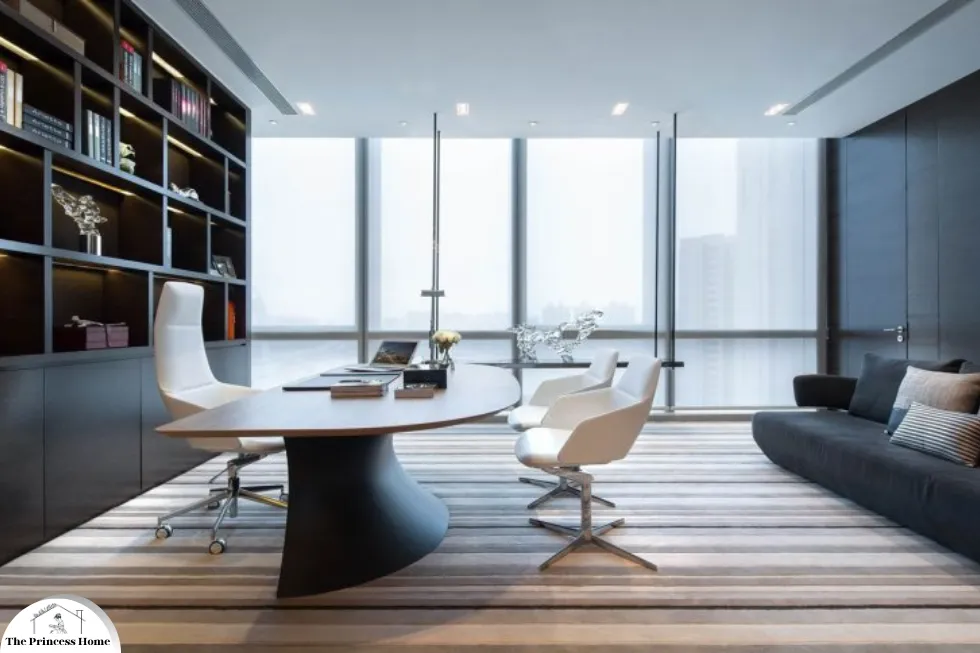
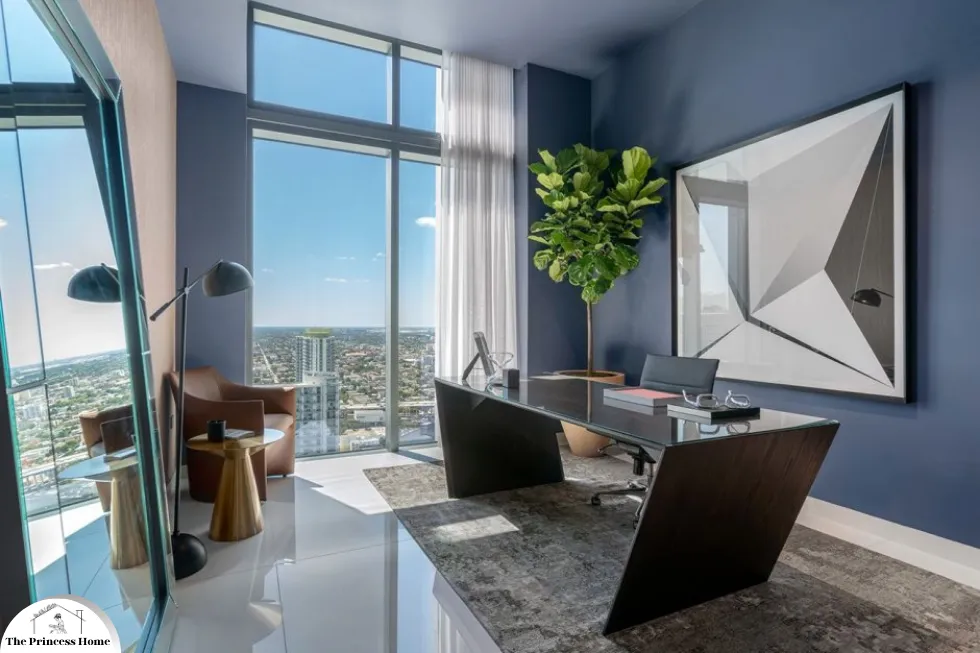
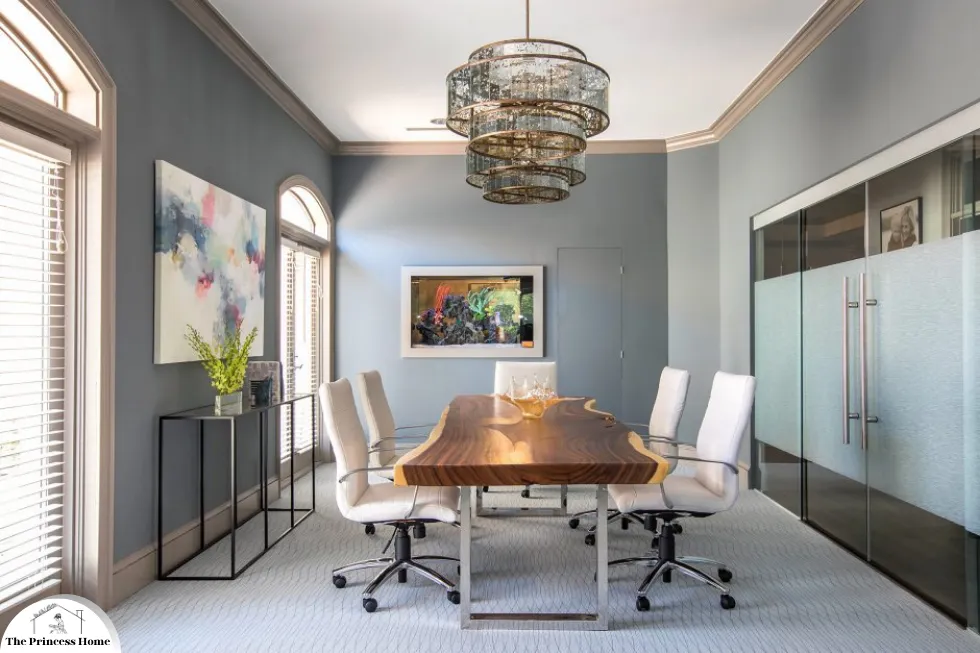

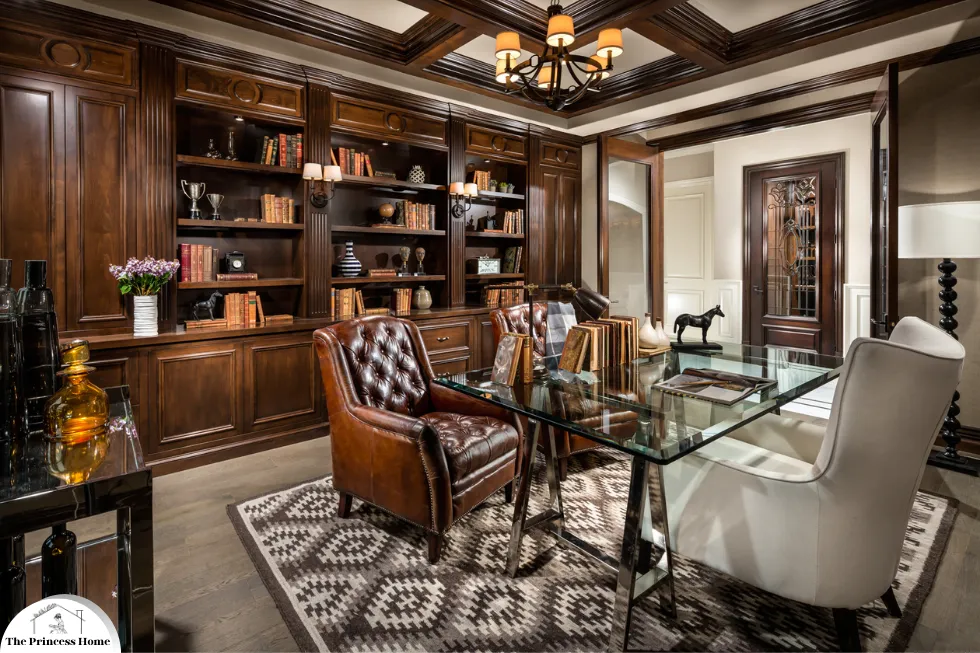
Here are some frequently asked questions related to choosing the perfect home office carpet:
Q1: How do I choose the right carpet texture for my home office?
A: When selecting a carpet texture for your home office, consider factors such as comfort, durability, and aesthetic preferences. Plush carpets with soft textures provide a luxurious feel underfoot and are ideal for creating a cozy atmosphere. For high-traffic areas or workspaces prone to spills and stains, consider textured or looped carpets, which offer better durability and camouflage dirt and debris more effectively.
Q2: Are there any eco-friendly options available for home office carpets?
A: Yes, there are several eco-friendly options available for home office carpets. Look for carpets made from sustainable materials such as wool, bamboo, or recycled fibers. Additionally, consider carpets manufactured using environmentally friendly processes and certified by organizations such as the Carpet and Rug Institute’s Green Label Plus program or the Cradle to Cradle certification.
Q3: How do I maintain and clean my home office carpet?
A: Proper maintenance and cleaning are essential for prolonging the life and appearance of your home office carpet. Vacuum regularly to remove dirt, dust, and debris, and address spills and stains promptly using mild detergent and water. Consider professional steam cleaning or dry cleaning every 12 to 18 months to deep clean and refresh your carpet. Follow manufacturer’s guidelines and recommendations for specific care instructions.
Q4: Will a carpet in my home office exacerbate my allergies?
A: While carpets can potentially trap allergens such as dust mites and pet dander, choosing the right type of carpet and implementing proper cleaning and maintenance practices can help minimize allergen exposure. Opt for carpets made from hypoallergenic materials such as wool or those treated with anti-allergen coatings. Vacuum regularly using a high-quality vacuum cleaner with HEPA filtration, and consider professional cleaning to remove allergens and maintain a clean and healthy indoor environment.
Q5: How do I determine the appropriate size of carpet for my home office?
A: To determine the appropriate size of carpet for your home office, measure the dimensions of the room and consider the layout of furniture and workspaces. Allow for sufficient clearance around desks and chairs, and ensure that the carpet extends beyond the perimeter of furniture to create a cohesive and visually balanced space. Consider using area rugs or carpet tiles to customize the size and shape of the carpet to fit your specific needs and preferences.
Q6: Can I install the carpet in my home office myself, or should I hire a professional installer?
A: The decision to install the carpet in your home office yourself or hire a professional installer depends on factors such as your level of experience, the complexity of the installation process, and your personal preferences. While DIY installation may save money, professional installers have the expertise and equipment to ensure proper installation and minimize potential issues such as uneven seams or wrinkles. Consider consulting with a professional installer to assess your options and determine the best approach for your home office carpet installation.
Q7: How can I minimize noise in my home office using carpet?
A: Carpets can help absorb sound and reduce noise levels in your home office. Choose carpets with thicker pile and higher density, as these provide better sound insulation properties. Consider installing underlayments or acoustic mats beneath the carpet to further enhance noise reduction capabilities. Additionally, strategically place furniture and decor items to minimize sound reflection and create a more acoustically balanced environment.






